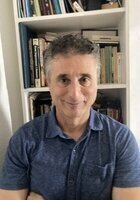All AP World History Resources
Example Questions
Example Question #7 : Political Protest, Reforms, And Revolution 1450 To 1750
What happened when James II took over the monarchy of England?
He was peacefully deposed and replaced with a Catholic alternative
He was captured and executed by rebels
He was peacefully deposed and replaced with a Protestant alternative
He was captured and executed by Parliament
He was violently deposed and replaced with a Catholic alternative
He was peacefully deposed and replaced with a Protestant alternative
James II ascended to the English throne in 1685 and ruled for three years before he was peacefully deposed in the so-called Glorious Revolution. James II was not a very palatable choice for monarch, from parliament’s perspective, due to the fact that he was an absolutist and a Catholic. The English Parliament, fresh from their victory in the English Civil War, refused to accept James II’s reign and invited William of Orange (the ruler of the Netherlands) to ascend the throne. William, and his wife Mary, became King and Queen of England in exchange for passing the English Bill of Rights, which, among other things, guaranteed the supremacy of Parliament.
Example Question #11 : Political Protest, Reforms, And Revolution 1450 To 1750
Who reigned in England in the middle of the seventeenth century, between Charles I and Charles II?
Thomas Cranmer
Thomas More
William of Orange
Oliver Cromwell
The Duke of Essex
Oliver Cromwell
Oliver Cromwell was a Puritan and a military leader of the Parliamentarian forces during the English Civil War. Following victory in the civil war, Cromwell became Lord Protector (de facto dictator) of Commonwealth of England, Scotland, and Ireland. Cromwell’s reign was quite unpopular as he instituted a number of puritanical policies (like the prohibition of alcohol and gambling), which were not welcomed by the English public. Cromwell’s reign is also marked by a series of atrocities committed against the native population of Ireland.
Example Question #12 : Political Protest, Reforms, And Revolution 1450 To 1750
Laws requiring Russian men to shave their beards were examples of __________.
Ivan the Terrible’s cruelty and authoritarianism
Catherine the Great’s enlightened despotism
Josef Stalin’s paranoia and distrust of his population
Ivan III’s movement towards Russification
Peter the Great’s westernizing efforts
Peter the Great’s westernizing efforts
Peter the Great was a Russian Tsar from 1682 until 1725. He is one of the most celebrated rulers in Russian history. His achievements included vast territorial expansion and the establishment of the port city of St. Petersburg. He was also determined to modernize and westernize Russian society and spent a great deal of time traveling Western Europe and studying European society. One of his more famous laws required Russian men to shave their beards so that they would more closely resemble their European counterparts. Peter the Great is widely credited with integrating Russia more closely into the fabric of European society.
Example Question #21 : Political Protest, Reforms, And Revolution
What is act of defenestration?
The clearing out of forests on a massive scale for economic or agricultural use
An institutional act of religious censorship
The action of throwing someone or something out of a window
A movement within working class English to destroy machinery
Self-harming to atone for sins
The action of throwing someone or something out of a window
Coined by the incident in 1618 Prague that sparked the Thirty Years War, defenestration is the act of throwing someone out of a window. The Catholic ruling power of Bohemia allowed religious freedom to its largely Protestant inhabitants after the 1609 issuing of the Letter of Majesty. After his ascension to the throne of Bohemia in 1617, Ferdinand II ordered the cancelation of Protestant churches under construction. Catholic representatives of the crown met with local Protestant estate owners at a local meeting hall in Prague, to deliver them with the King's order. When the Protestant demanded an immediate reply of the Catholics' superiors, they denied. The irate Protestants then threw them out of the three story window.
Example Question #22 : Political Protest, Reforms, And Revolution
Which European Empire reached the height of its expansion in 1658?
England
Swedish Empire
France
Spanish Empire
Ottoman Empire
Swedish Empire
The Swedish Empire reached its peak in 1658 reigning over modern day Sweden, Estonia, Finland and parts of Norway. Through King Adolphus superior military leadership funded by an efficient government Sweden became the largest nation in Europe behind Russian and Spain. Years of military dominance birthed a coalition of anti-Sweden forces led by Russia known as the Great Northern War (1701-1721), which stripped Sweden of its formerly conquered territories.
Example Question #1152 : Ap World History
American and French revolutionaries shared a belief in the importance of __________.
political representation
ending all forms of taxation
regicide
abolishing slavery
colonial independence
political representation
The American and French revolutions both directly referenced the need for political representation that revolutionaries wanted. Neither sets of revolutionaries wanted to kill the king initially. Only American revolutionaries promoted colonial independence, and while abolition was mentioned by revolutionaries in both nations, it was not one of the explicit goals of either revolution.
Example Question #1153 : Ap World History
The leader of the conservative Montagnards at the National Convention was
Cromwell
Marat
Danton
Robespierre
Robespierre
In the first election for the National Convention in 1792 Robespierre continued his rise to power by leading his Montagnard party in the election. Georges Jacques Danton was a moderate Jacobin who was guillotined in 1794. Jean-Paul Marat was the leader of the Montagnard faction, a more radical element in the revolution. Oliver Cromwell was a British ruler in the 17th century.
Example Question #1 : Political Protest, Reforms, And Revolution 1750 To 1900
The government of the Third Estate responsible for French Revolution was called the ______________.
Estates General
The Directory
National Convention
National Assembly
National Assembly
In 1789, Luis XVI called the Estates General to help find solutions to the monetary issues of the government, but they could not agree on anything, so the Third Estate representatives broke off and formed the insurgent National Assembly, thus beginning the French Revolution. The Estates General was an assembly of members of all three of the estates that made up French Society and was held in 1789. The National Convention was held in 1792, and was the first democratically elected assembly held in France (under universal male suffrage). The Directory was a form of government in the very latest stages of the French Revolution.
Example Question #1155 : Ap World History
The government in control of France after the Reign of Terror was known as the __________.
National Assembly
Directory
Legislative Assembly
National Convention
Directory
The Death of Robespierre helped bring about the end of the National Convention and the Reign of Terror. Once this happened the Directory filled the power vacuum as the new government of France.
Example Question #5 : Political Protest, Reforms, And Revolution 1750 To 1900
Following the return of Joao VI to Portugal Joao left his son Pedro to personally rule over Brazil and granted Brazil a place as part of the Kingdom. However, what happened one year later in 1822?
Pedro declared independence for Brazil
Brazilians overthrew Perdo and declared independence
Pedro left Brazil to rejoin the court in Lisbon
Brazil was made a colony again
Pedro declared independence for Brazil
Just over a year after his father returned to Portugal and left him in charge of Brazil, Pedro decided to declare independence from Portugal, and declared Brazil to now be the Empire of Brazil. As such Pedro declared himself Pedro I Emperor of Brazil.
All AP World History Resources




